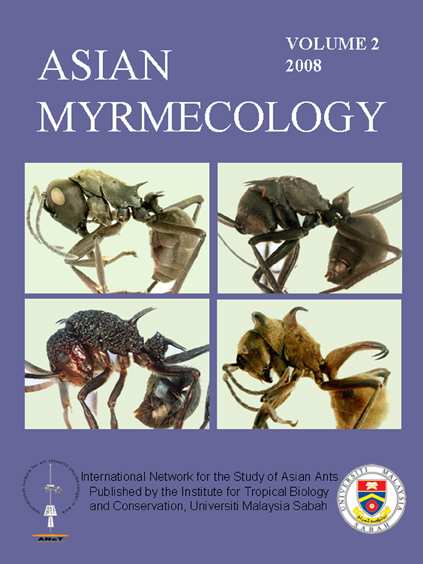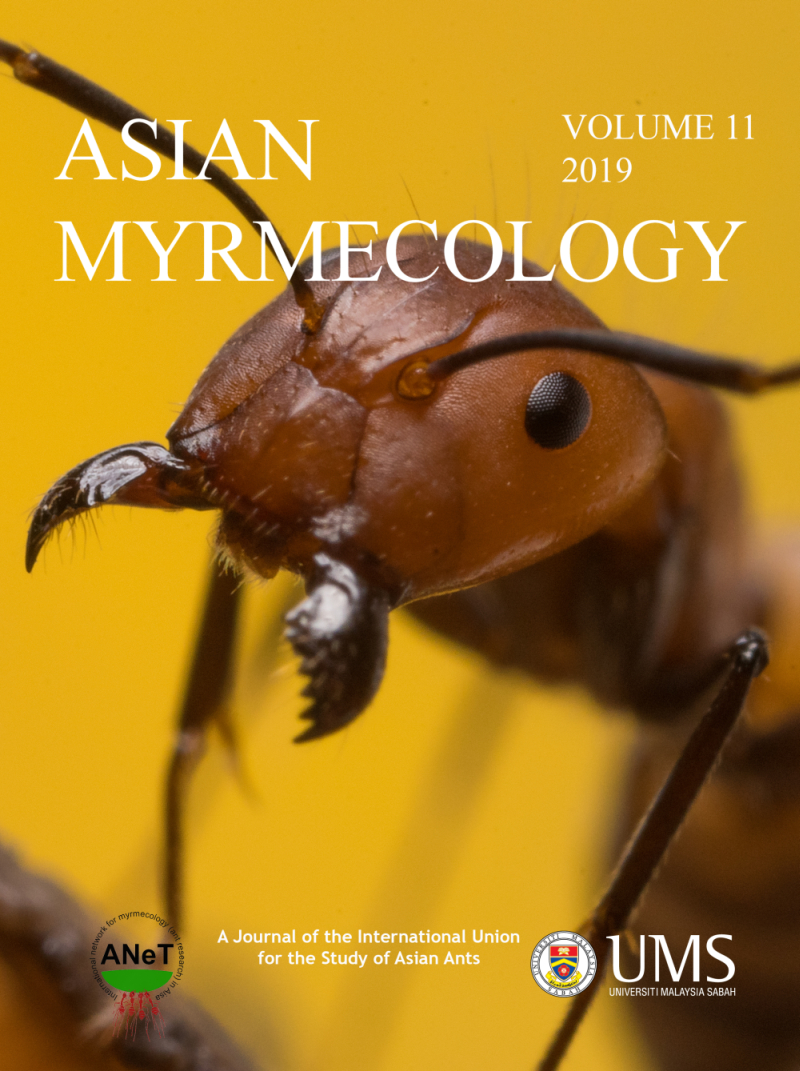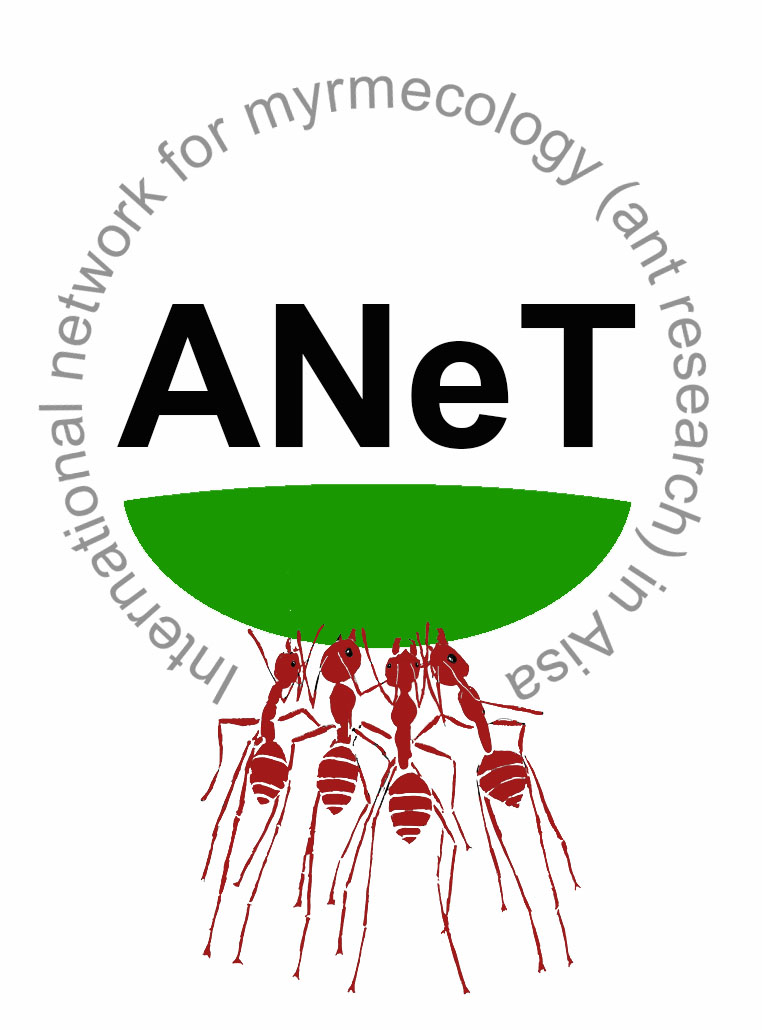ASIAN
MYRMECOLOGY
Image: François Brassard
Ecology and Distribution
Asian Myrmecology, Volume 2, pages 85-93, published December 2008
DOI: 10.20362/am.002008
Ant community variation in urban and agricultural ecosystems in Vadodara District (Gujarat State), western India
DOLLY KUMAR & ARCHANA MISHRA*
Abstract:
Studies on ant communities of India are sparse and needed. This is the first comprehensive survey of ant communities from the Vadodara district located in the central part of Gujarat, India (west coast of the Indian Peninsula). The present study was undertaken to (i) assess ant diversity and density changes along a habitat gradient and (ii) establish the species composition of ant communities in urban and agricultural ecosystems. Study sites comprised (a) agricultural ecosystems, which included fields of cotton, castor, tobacco and some vegetable crops, and (b) urban ecosystems, which included the community gardens of Vadodara. Pitfall traps and hand collection methods were used for collecting ants. Twenty-two ant species from 13 genera and five subfamilies were collected. Ants of nine genera and 15 species were found in urban ecosystems, and ten genera and 16 species in agricultural ecosystems; rarefaction curves indicated these totals to be complete for the detectable ant fauna. Pheidole showed greatest species richness in urban ecosystems, whereas Camponotus and Pheidole were equally speciose in the agricultural ecosystems. Results indicate that the composition of ant species is unique to each habitat, and most likely governed by the vegetation and the other biota around it.
Keywords:
ant communities, agricultural ecosystems, urban ecosystems, diversity, Gujarat State
Get PDF (221K):
Get Appendix (37K):
Department of Zoology, Faculty of Science, The Maharaja Sayajirao University of Baroda, Vadodara-390002, (Gujarat) India
*Corresponding author: mishra_archana@yahoo.com



